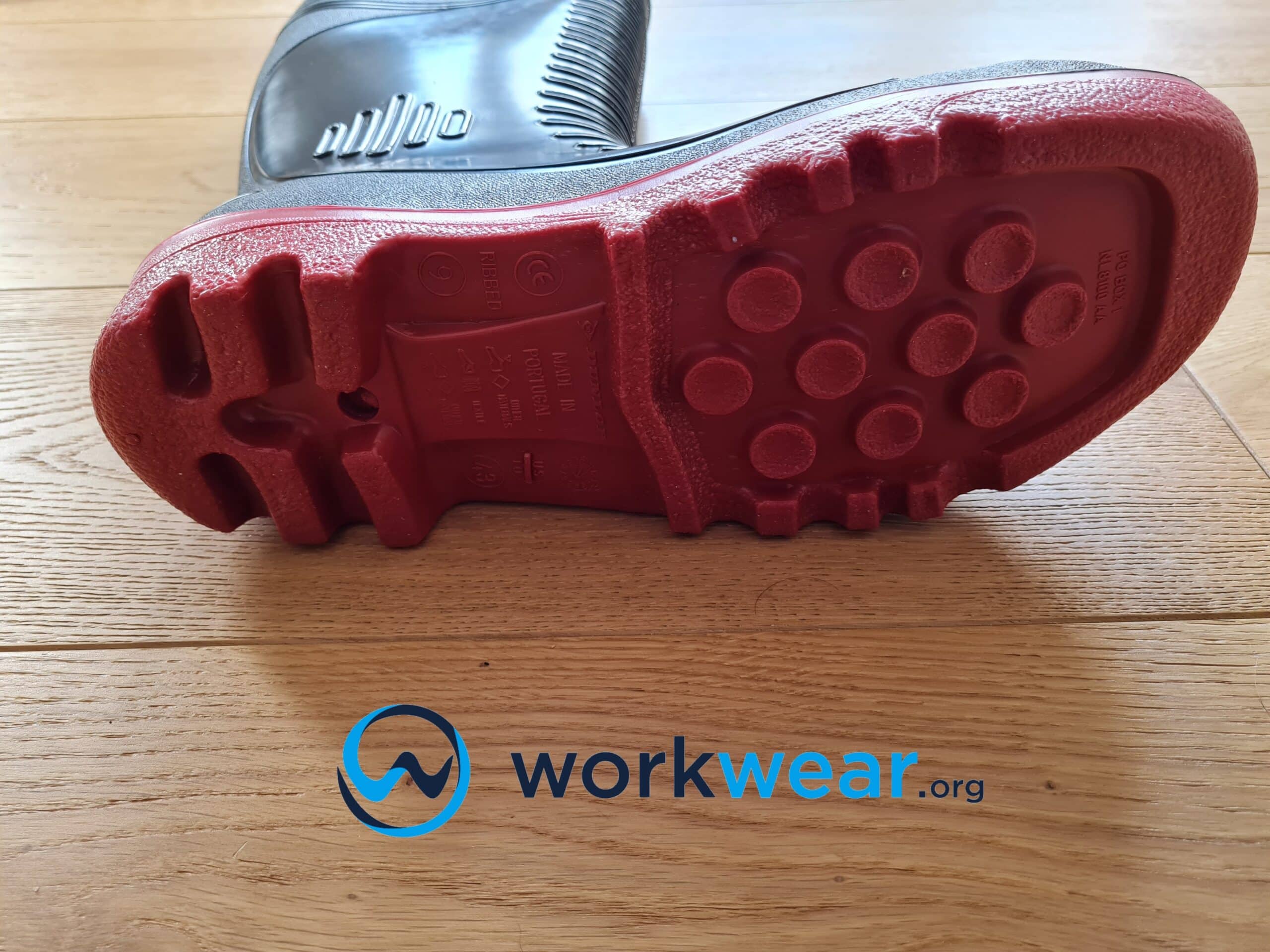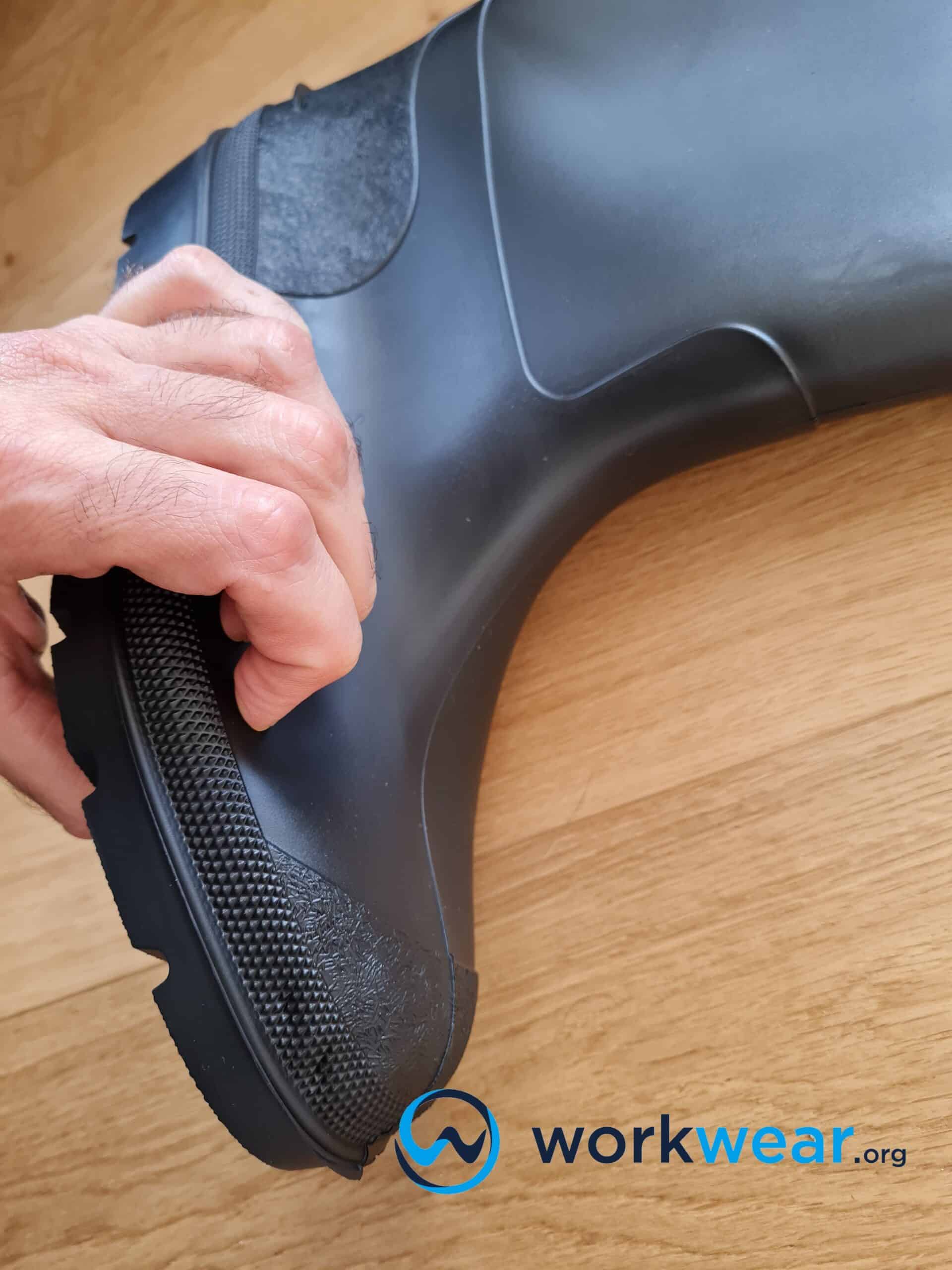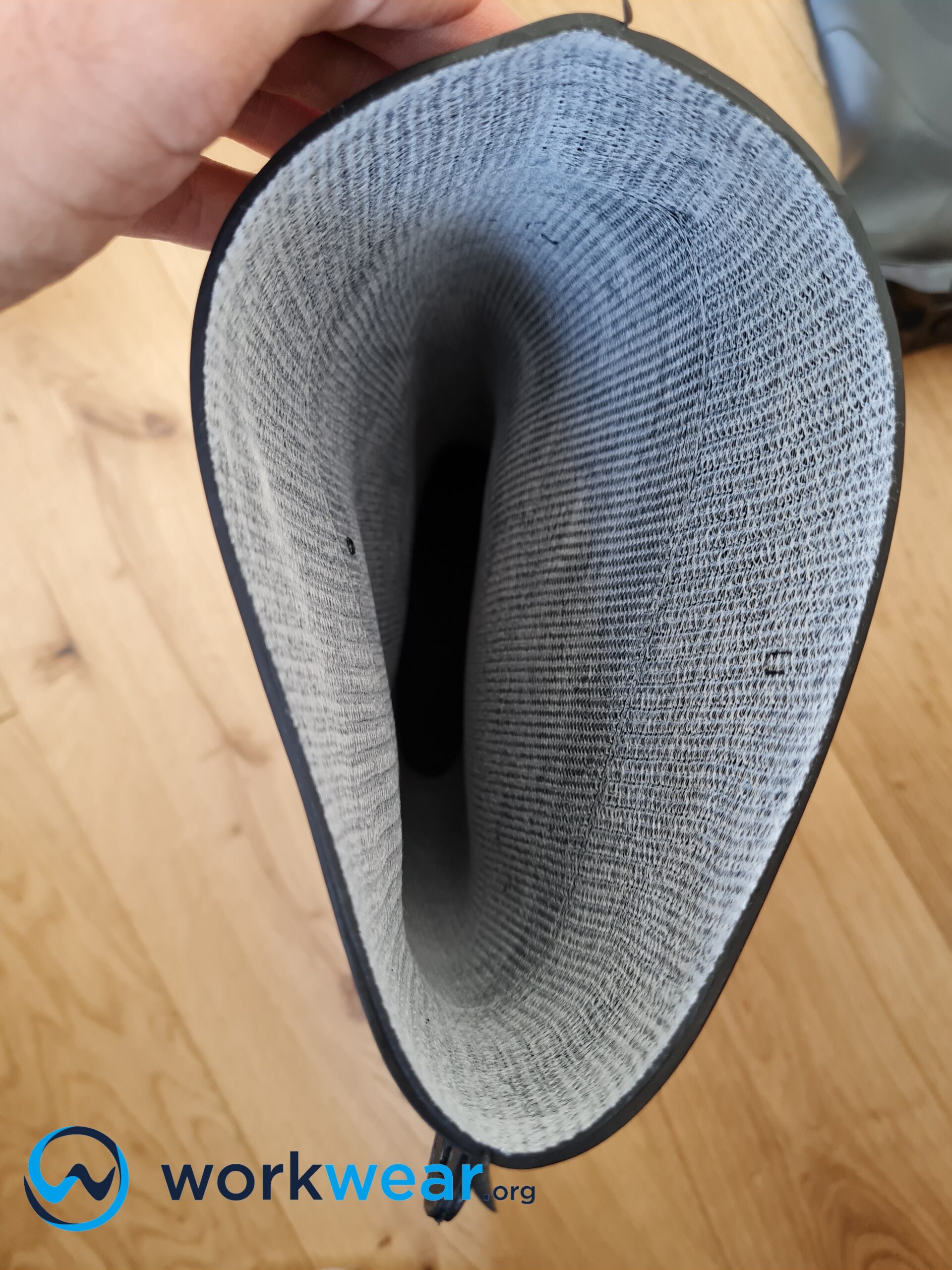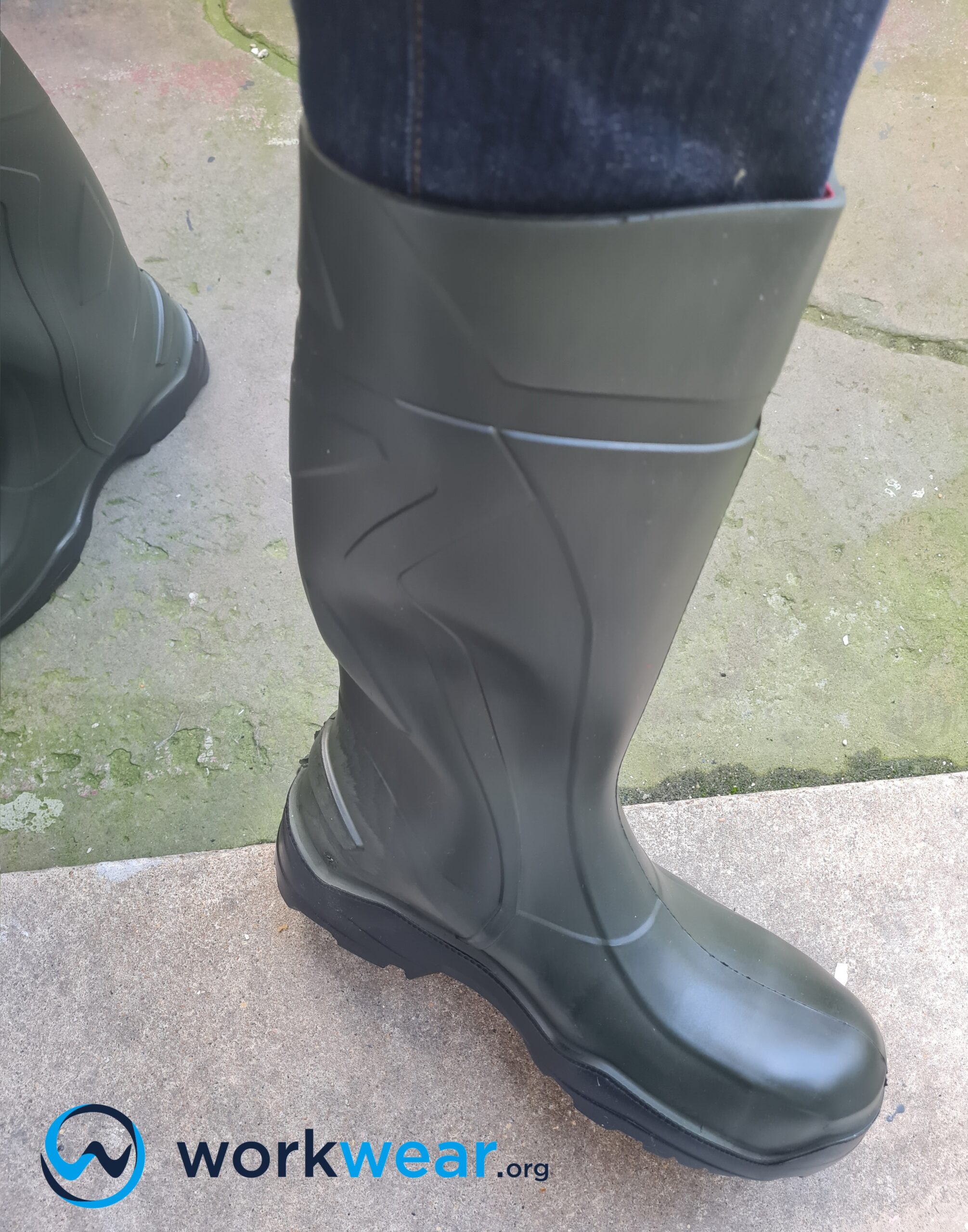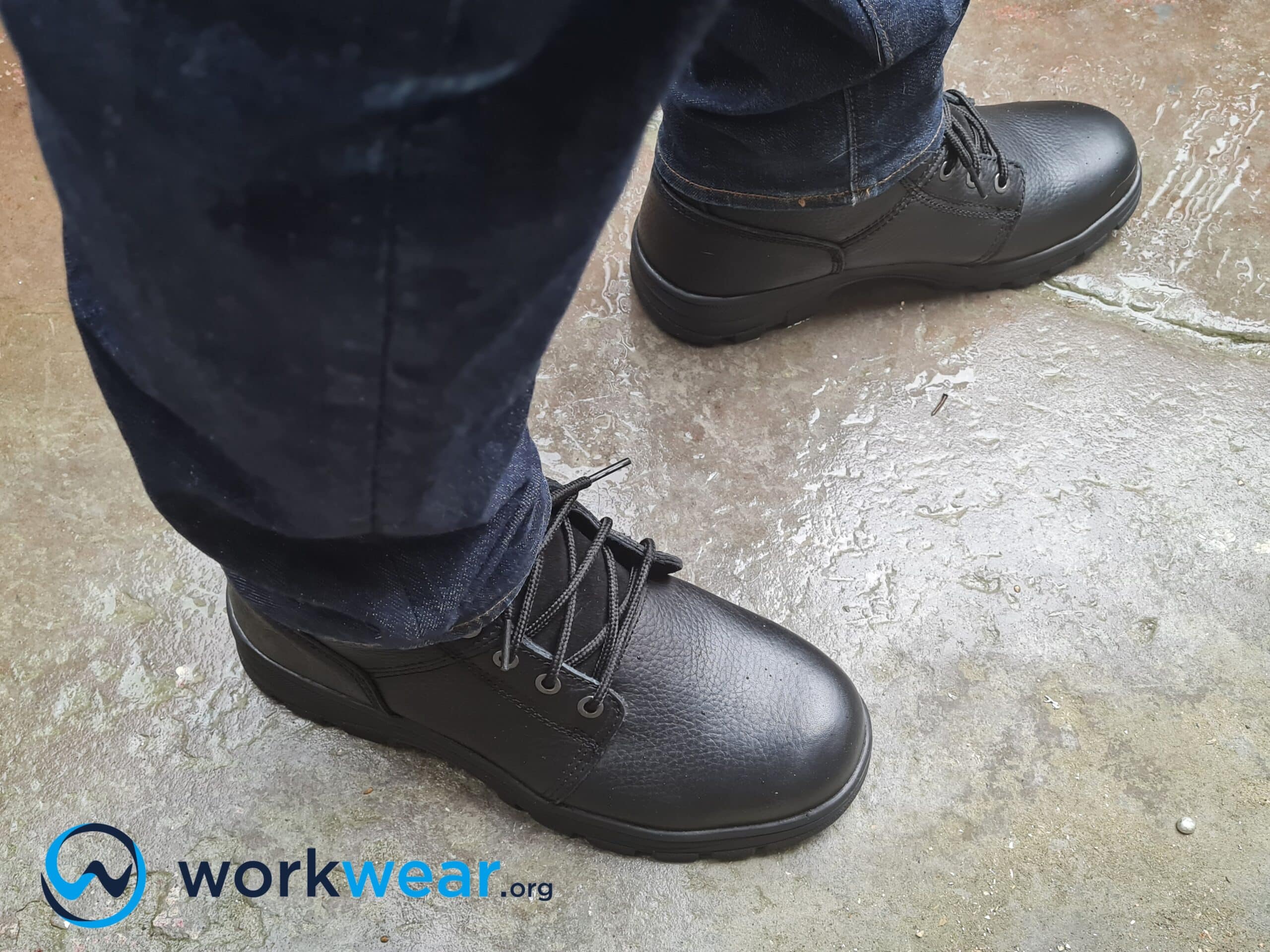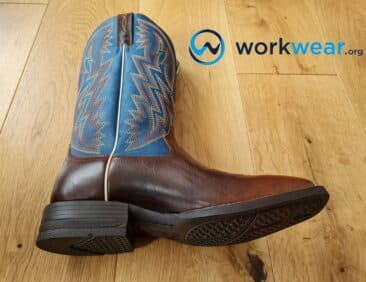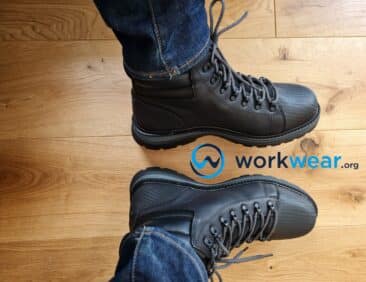Rubber Boots vs Normal Safety Boots
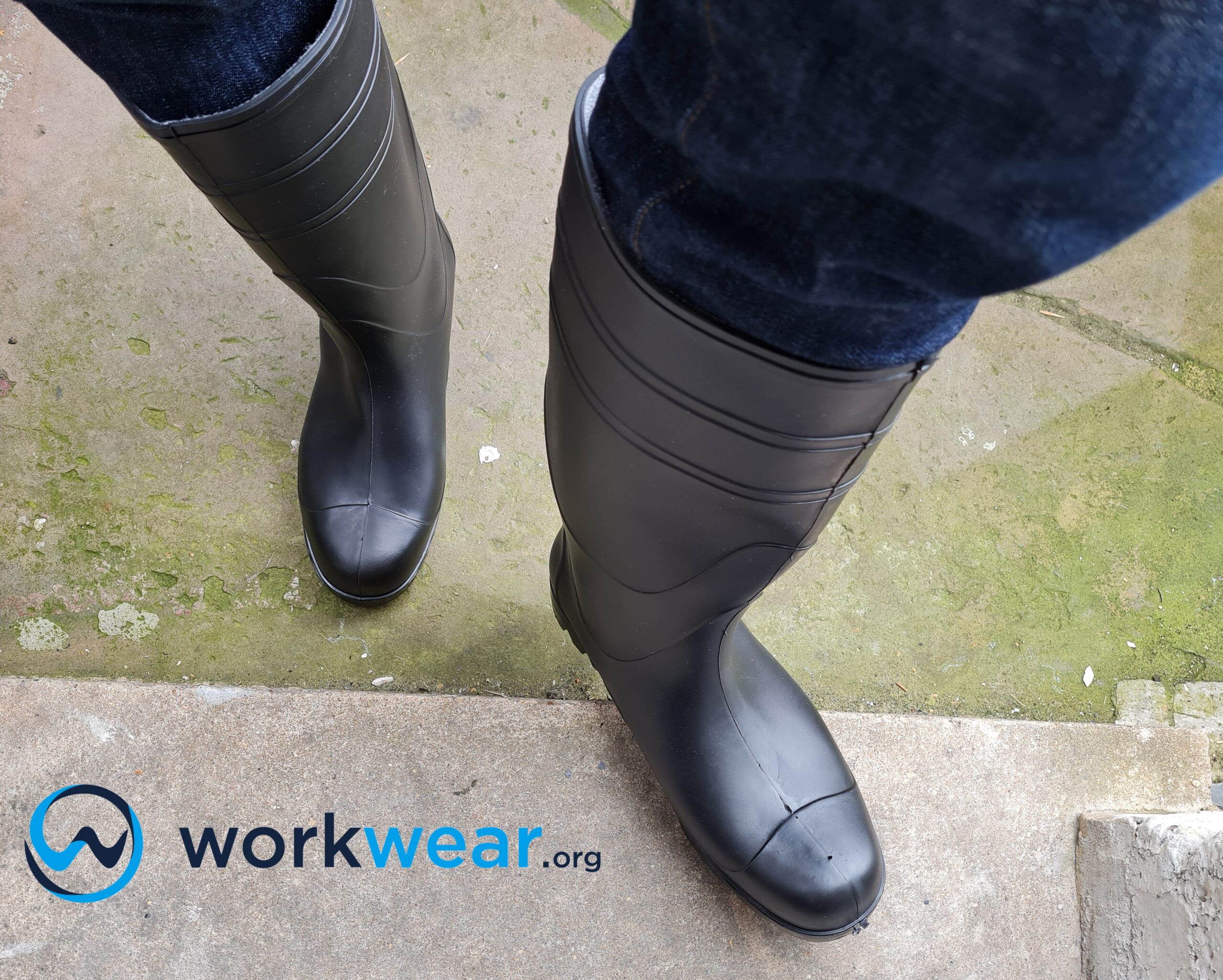
Rubber boots are the go-to footwear choice if you need to work in wet settings or when you’re working outdoors in the rain. They protect the feet against getting soaked, promoting lasting comfort while also preventing bacterial growth that may result from excessive moisture build-up. Meanwhile, normal safety boots are great options that can be relied on to protect the feet against dangerous impact and compression in hazardous job sites.
But what if you’re working in a wet location that also has large objects threatening to drop from elevated spots? Or if you’re working with heavy tools and equipment outdoors in inclement weather? In this article, we’ll go deeper into each option’s qualities, so you’ll be able to make the best decision between rubber boots and normal safety boots.
Rubber Boots
Rubber boots are built to repel water and other liquids, creating a strong barrier that doesn’t allow liquid penetration so the feet can stay dry and comfortable inside. They’re great choices for working on surfaces with standing water, such as puddles or waterlogged ground conditions. Rubber boots also come in handy when working outdoors in bad weather conditions as they seal out the rain for continuous foot dryness. Regular rubber boots don’t offer much protection against other safety hazards, but some enhanced versions come with protective features, such as safety toe caps and electrical hazard protection.
Pros
Strong Waterproofing
The rubber material offers strong resistance to liquid penetration, making it an excellent choice for keeping the feet dry even with continuous exposure to wet elements. Rubber boots make it possible for you to continue working in areas with standing water without compromising foot safety and comfort, as the liquids won’t get in. They also protect the feet from getting soaked when it suddenly rains while you’re working outdoors.
Extended Coverage
Most rubber boots come with tall heights reaching from mid-calf to knee-high. These tall structures offer extended coverage, keeping most of the lower leg protected from extreme wetness, especially when working in standing water such as deep puddles. Tall rubber boots also offer protection against other safety hazards, such as sharp objects and abrasive materials that threaten to injure the leg and calf in tough work settings.
Roomy Interior
Rubber boots usually have a loose fit and a spacious insole. Their roomy interiors allow a wider range of motion, making it easier to walk normally with no awkward stiffness getting in the way.
Easy to Clean and Maintain
Rubber boots are very easy to clean – they need to be washed with water to get rid of mud and dirt that may have built up over the long hours of use. They don’t need special cleaning solutions, with the material easily shedding off debris with just a simple hosing down after the work is done for the day. After cleaning off the dirt build-up, the boots can be left to dry or wiped easily, ready for the next workday.
Affordable
The simplest rubber boots without safety enhancements have considerably lower prices than safety toe work boots. They’re superb choices if your main concern is maximum foot safety against wetness, but you don’t want to spend a lot on footwear.
Cons
Can Get Too Warm
The rubber material stops liquids from seeping in, and it also doesn’t allow a lot of air to get into the boot. This property, coupled with the tall structure that’s common in rubber boots, creates an environment that’s prone to overheating with continuous use for long hours. The boots can turn warm even more quickly if they’re used in hot conditions, such as working under the sun or on humid job sites. As the interior heats up, sweat can pool inside the boot and create another source of foot discomfort.
Not Very Comfortable
Rubber boots don’t normally have cushioned interiors and usually just have straightforward designs. Without ample cushioning inside, the feet won’t have the right amount of softness and support that’s needed to walk comfortably throughout the day. The rubber boots’ tendency to heat up also contributes to the discomfort, making the feet feel painfully warm with hours of nonstop boot-wearing. It also doesn’t have strong ankle support, so the foot can feel unstable when walking in uneven ground conditions.
No Safety Toe
The most basic rubber boots often don’t have safety toes, so they can’t protect the feet against serious injuries in case large or heavy items suddenly come dropping from high areas in the workplace. Without safety toe caps, rubber boots are not recommended for job sites with high exposure to compression and impact risks.
Lacks Versatility
The design of rubber boots is suitable for wet outdoor conditions and other settings that are exposed to wetness. These boots often have an extremely rugged or bulky look, so they will look out of place when used in settings such as indoor offices and in more laidback environments.
Uses of Rubber Boots
Rubber boots aren’t just for wading in deep puddles or walking in the rain. They keep the feet dry and protected while gardening, hiking on the muddy ground, fishing, and hunting. Basic rubber boots are ideal for farm and ranch work, as well as jobs with constant exposure to liquids. Meanwhile, the ones with protective components (such as safety toes) are suitable for extremely wet construction sites and other harsh job environments. Rubber boots can also be used indoors, such as when doing maintenance or repair jobs while there’s a leaking pipe in the area.
Rubber boots with insulation are designed for use in wet and cold environments, such as outdoors during winter.
Normal Safety Boots
Normal safety boots showcase enhanced features that aim to protect the feet against a wide range of safety hazards that may be lurking in challenging job environments. These boots can look like regular work boots but are fitted with components that promote improved foot safety, including safety toe caps, penetration-resistant midsole, electrical hazard protection, and a metatarsal guard. Most of these boots also have enough cushioning to soften the blow of walking on hard surfaces, promoting increased comfort even after hours of continuous boot use.
Pros
Strong Foot Protection
Regular safety boots are designed to bring increased protection against various hazards that may be encountered in harsh worksites. They’re built to promote improved safety by addressing various hazards and forming protective barriers, protecting the feet from serious injuries. Safety toes and metatarsal guards block heavy items that can drop or roll on your foot, while puncture-resistant plates shield the bottom against sharp objects. On the other hand, electrical hazard protection delivers a secondary source of safety against electric shock in case of unintended contact with live currents in dry conditions.
Versatile
Safety boots come in a wide variety of designs that are suitable for different work settings. There are safety toe work boots with heavy-duty structures, ideal for extremely tough environments that call for enhanced footwear strength and durability. Some of these boots have more stylish profiles that can be used in more casual workplaces and even in social settings without compromising enhanced foot safety. A lot of these boots are versatile enough to work great on and off the job site, making it easier to maximize the footwear even after the end of the shift.
Comfortable
Most safety work boots are built with ample cushioning, shock absorption, and other features that increase comfort. Cushioned interiors support the feet to help make walking comfortable for longer. The sole can have shock-absorbing properties to fight foot fatigue, with the impact of walking absorbed and then dispersed throughout the boot. Other comfort features, such as breathable and cooling components, can also be enjoyed in high-quality safety boots.
Durable
Safety work boots mostly come with strong profiles and reinforced components. They’re built to withstand heavy use even in the most demanding surroundings, offering reliable durability that can be enjoyed with long-term benefits.
Cons
Can be Heavy
Work boots with safety components – such as metallic toe caps and puncture-resistant midsoles – tend to be heavier than regular boots. The additional weight may not be an issue with short periods of use but can result in significant discomfort with all-day use.
More Expensive than Non-Safety Work Boots
Work boots with safety features are naturally more expensive compared to regular work boots that don’t have these component enhancements. High-quality safety boots may not be the best for those looking for the most affordable choices, although their safety features and durability definitely justify their price.
Uses of Normal Safety Boots
Normal safety boots are recommended for professionals frequently exposed to compression and impact hazards that can drop on the feet. These boots offer superior foot protection for carpenters, delivery personnel, construction workers, ranch workers, heavy machinery operators, warehouse personnel, welders, and other jobs in harsh conditions.
Comparison Table
| Boot Type |
Pros |
Cons |
|---|---|---|
| Rubber Boots |
|
|
| Normal Safety Boots |
|
|
Conclusion
Rubber boots are designed to deliver maximum waterproofing to protect the foot from being soaked when wading in deep puddles or when working outdoors in the rain. They’re outstanding choices that generally don’t cause a lot and are a breeze to clean and maintain. However, normal safety work boots can’t be beaten if you’re more concerned about keeping the feet protected against safety threats such as dangerous compression and impact or puncture hazards.
